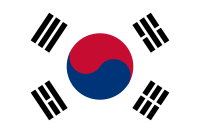Stephen Carroll is one of 42 Tea Journey tasters reporting on the 2016 harvest. Look for his posts on South Korea as the season progresses.
The Republic of South Korea certainly keeps its tea and tea culture a secret. So secret that not even many South Koreans are familiar with their own tea types and production methods.
Conjecture and myth obscure how tea arrived on the peninsula. But you don’t need to be a botanist to assume, since the country is attached to China on its northern border, that tea would have been an early trading commodity. It certainly was very important in Buddhism as was the case in Japan.
South Korean tea is very broadly separated into two main groups. There is the large and mainly industrialized tea growing and processing which occurs mostly in the area of Boseong and Jeju Island. And the small, family run and artisanal growers and processors in other places but mostly in the Jiri Mountain area. I know that there are hundreds of them, possibly even thousands.
It is in Jiri I begin. For several years I have traveled these areas meeting the growers and producers and melding together the knowledge of what makes South Korean teas unique. As well as formal qualifications in Korean Tea and Tea Culture it is the “get in there and get dirty” that allows me to explore the complexity of the teas produced.
The pluck for these teas takes place only in spring. Traditionally teas were picked before and after certain dates and thereby proved their value and worth. This is not so these days due to concern over weather and growing conditions.
On the Korean peninsula, this winter was very severe with large snow dumps. This bodes well for a spectacular tea harvest this year and makes me very excited for visiting my grower friends there this May. Korean geography has been described as resembling “a sea in a heavy gale” because of successive mountain ranges that run in lines north to south down the country. The Jiri Mountains are one of the three major ranges. Climate is from severe cold to extreme heat with high humidity and monsoon-like summers.
South Korea produces mainly green teas and they fall into four categories depending on when they are plucked.
See: Size matters by Mina Park.
“Ujeon” is the first pick, the second pick is called “Sejak” the “Jungjak” and the final pick is “Daejak.” So far so good. Then there are the teas that are oxidised and here it gets a little fuzzy. Tea people try and relate this oxidised tea called “balhyocha” to Chinese equivalents. This ends up with balhyocha being called “Hwang cha”, “hong cha” and various other “chas.” There is no direct equivalent. That’s it. The hundreds of tea producers oxidize to their own secret recipes…a little more…a little less, there is no standardization. So, we can say the main Korean tea crop is green and then there are the others. This is not to say that these teas are not wonderful and special in their own right.
But let me begin then with a green Ujeon tea from the Jiri area. Many years ago my first foray into Korean tea knowledge began at the Hadong Wild Tea Festival. Walking around and seeing the magnificence of this tea I came across a lady sitting in her booth. She smiled and offered me a cup of her tea…..that was it….the aroma was of grass…no, grass with cream….no, grass with cream and vanilla but with a smooth nutty linger and the taste filled my mouth and filled my head then filled my body…this was one sensuous cup….and then we drank more. For the rest of the week I returned to this lady, Kim, and she taught me in a wordless language how to brew Korean tea.
Kim comes from a matrilineal line of tea makers but now that she has retired it has been taken over by her son Jun. The company, Yejeon Tea does not export overseas but you can order it online.
Ujeon Korean tea
Here is what you can expect:
- Dry leaf: Color is green to grey-green. Very small tips only (known as “sparrow’s tongue” because of the shape and size, this is achieved by being hand-picked only). Dry and prone to a slight crumble if handled poorly.
- Brew: 70°C – 80°C. 15 second steep.
Subsequent brews I think are best at same temperature and 10 seconds steeping. - Color: Pale, “new leaf” green, very clear and bright. In good light it sparkles as the palest of jade.
- Aroma: New grass with a creamy linger, slight vanilla and sweet nut.
- Taste: Out of this world! Intense sweetness followed by a tail-end astringency that piques the senses. A full mouth and throat feel that is delicate and soft but with a very long after taste. It is seductive and haunting. What is that elusive flavor? It is in the grassy, hay domain but is so full it almost jumps from your mouth and then there is a salt and almost mineral or marine linger. This taste is “so Korean” that it has no parallel with other teas.

The teas of Korea are worthy to stand with any teas produced across the globe. Production from the best producers is small and sold at the time of processing. You need to be there to get it along with all the other variations to bring you a complete picture of this tea producing peninsula.
Tea Market
Get More Value from Your Tea: BRU Maker One
+41794574278
Jacque's Organics
(647) 804-7263